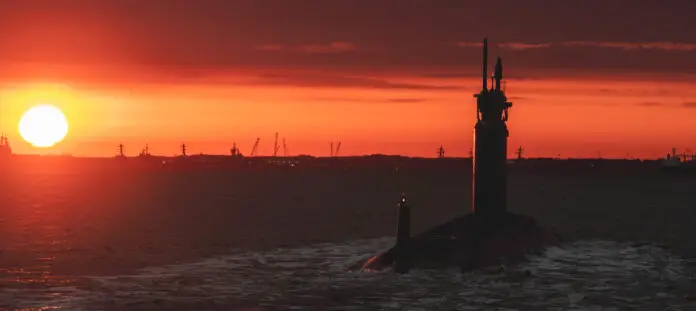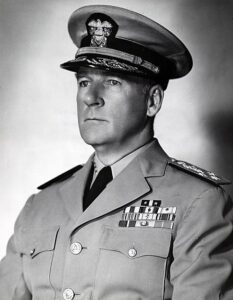NWS Earle Both the US Army and the US Navy sought out numerous locations to build an ammunitions depot in the New York area during World War II before deciding on Leonardo for the dock and Colts Neck for the administrative offices. With the third ship named after the Garden State, the NEW JERSEY (SSN796) planned to be commissioned at the Leonardo pier on September 14, the history of how the site was selected to protect the New York Harbor shows the detail military leaders studied before making a final decision.
It was even before the onset of World War II that both the Army and Navy realized the necessity of creating a base that would enable them to load explosives in the New York port area. Army and Navy officers had studied the World War I record concerning loading of explosives activity in Sandy Hook Bay, so the Army was looking to put a depot somewhere in that area.
Caven Point in Jersey City had been a principal loading area during World War II; however, military officials recognized the dangers of explosive loading there because of its proximity to highly populated areas.
Both the Army and Navy explored locations in Port Monmouth, Spermaceti Cove, Cheesequake, Connecticut shoreline, Long Island, the Hudson River and Whitings.
Port Monmouth seems to be best, based on existing channels, nearby harbors, tides, currents, wind, visibility, ice conditions and subsurface conditions.
Port Monmouth was perfect! Except that it would mean acquisition of the many homes and businesses in that small community of Middletown Township.The plan was abandoned, and the studies continued.
But so did the war, and the need escalated. The Navy continued its search, citing possibilities in Long Island Sound, Long Island, Brooklyn and more, finding most of them impractical because of navigation difficulties, ship passage that would be required under bridges and over tunnels, and again, vastly populated areas.
So the Army and Navy explored the areas around Port Monmouth again, mapping the entire area after flying over Monmouth County, and finally decided Leonardo would be best and would disturb the least amount of people. Further, there was forested land so a rail could be built between there and more open areas in Colts Neck.
The Chief of Naval Operations declined to accept their plan to build a $ 21 million ammunition depot. Admiral William Henry Blandy, still convinced it was the proper and best location, reduced the costs, eliminating what he felt might be considered non-essential parts of the depot in his efforts to ensure the Port of New York would remain safe as the war continued to escalate. He presented a $14 million project which was approved by the Secretary of the Navy in June, 1943.
Work began in the administrative office in August 1943. By the following month, the first building at Earle was completed, staff moved in, telephone lines were installed, rights of way were established for the pier area and railroad, and Admiral Blandy continued to pursue more funds to continue construction of what he was certain would be necessary to meet the needs of the Port of New York and the logistics of the war.
Captain Burton H. Green was name commanding officer of Naval Ammunitions Depot Earle Oct. 20, 1943.
Admiral Blandy died in 1950 and is buried at Arlington National Cemetery.




